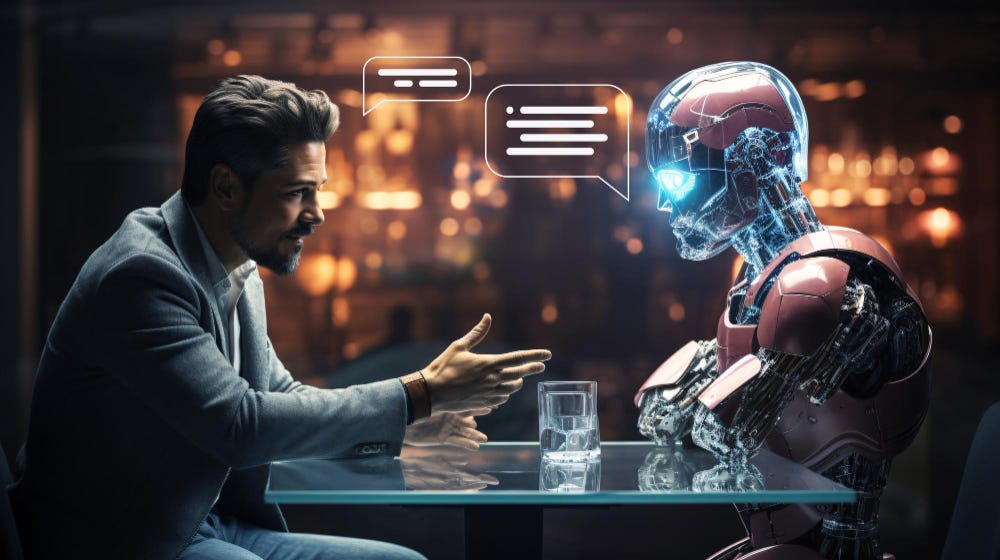
When attempting to predict the future, it is always useful to first review the past. Society operates in cycles, and technology has always been one of the greatest forces shaping those cycles. Examining how each wave of innovation has influenced human behavior often provides the clearest clues to what comes next. In this short blog entry, I want to explore the possible extremes of full integration of artificial intelligence (AI) into modern life.
The Disruption Curve
For most people, AI’s integration into daily life will be as disruptive as the arrival of the Internet, especially the World Wide Web. We are still at the tail end of that earlier transformation, and its effects continue to reshape our economy and culture. Brick-and-mortar stores have largely yielded to online sales. Automation has eliminated countless low skill “beginner” jobs. Semi-autonomous vehicles already allow people to remain mobile long after they would have otherwise given up driving.
The Fully Automated Society
So, what happens when AI becomes fully integrated, not just as a tool, but as a foundation of social infrastructure? Let’s look at some extreme, yet plausible, examples. None of these outcomes are caused by AI itself, but rather by human nature interacting with AI.
When self-driving cars reach the point where human operation is unnecessary, the effects will cascade far beyond transportation. Taxis, parking lots, and even car ownership as we know may vanish. Instead, people might join cooperative car networks paying for use rather than ownership.
Consider this: most cars sit idle for 23 hours a day. A shared cooperative could keep vehicles in near-constant use, dramatically increasing efficiency. Depreciation could become a tax benefit instead of a personal loss. Repairs and insurance costs could be pooled. Parking lots once vast, expensive real-estate sinks would no longer be necessary.
Imagine being dropped off at a restaurant while the car returns home or becomes available to others. Twenty minutes before you finish eating, you summon it back. The same applies to shopping, commuting, or entertainment. Office buildings and malls might no longer need acres of parking. Wealthier individuals may still own personal vehicles but gain the same conveniences — their cars will simply drive themselves home when not in use.
Human Intimacy and Artificial Companions
Now let’s move to a more controversial frontier: emotional and sexual relationships between humans and AI-driven robots. This may sound extreme, but it is not far off.
The first robotic brothel, Cybrothel, opened in Berlin in 2020, initially using dolls voiced by remote human actresses. Since then, the company and others like it have moved toward fully AI-based systems. Today’s humanoid robots remain limited by the “uncanny valley” effect appearing almost human but not quite, which provokes discomfort. Yet this barrier will fall, just as every earlier technological limitation eventually has.
Emotional attachment to virtual or fictional characters is already well documented. In 2018, Akihiko Kondo symbolically married the anime character Hatsune Miku. Before him, a Japanese man married the game character Nene Anegasaki from Love Plus in 2009, and another, Lee Jin-gyu, wed the anime heroine Testarossa from Magical Girl Lyrical Nanoha. These individuals identify as fictosexuals — people who form romantic relationships with fictional entities.
From Fiction to Industry
What seems fringe today may soon be mainstream. According to Google AI data, the global market for sex-robot dolls was valued at $346 million in 2024, projected to reach $764 million by 2031 and $13.39 billion by 2033. Much of this growth will come from East Asia, where China, Japan, and Korea are heavily investing in lifelike humanoid robots capable of emotional expression, sexual interaction, and domestic labor such as cooking, cleaning, and health monitoring.
The implications are profound. What will happen to human-to-human relationships when a fully functional, affectionate, obedient, and tireless robotic partner becomes available? The potential economic and social impact could be enormous perhaps even redefining family structures. Marriage as a social institution may erode, and child creation may become a contractual or laboratory process rather than a biological one.
Nothing New Under the Sun
Can it happen? The science-fiction author Isaac Asimov foresaw much of this decades ago. His Caves of Steel series (beginning with I, Robot in 1950) explored the social integration of robots, while Robots of Dawn (1983) depicted deep emotional and sexual relationships between humans and machines — long before real robots existed. Asimov wasn’t predicting technology; he was describing human behavior and how we inevitably reshape our environment — and our companions — to suit our desires.
Conclusion
The future of AI and AI-driven robotics is both clear and strange — but not stranger than human history itself. Every era of innovation has forced us to confront who we are and what we want. If the results of AI integration prove troubling, the fault will not lie in the machines. It will lie, as always, in human nature.
© November 2025 by Peter V. Radatti
